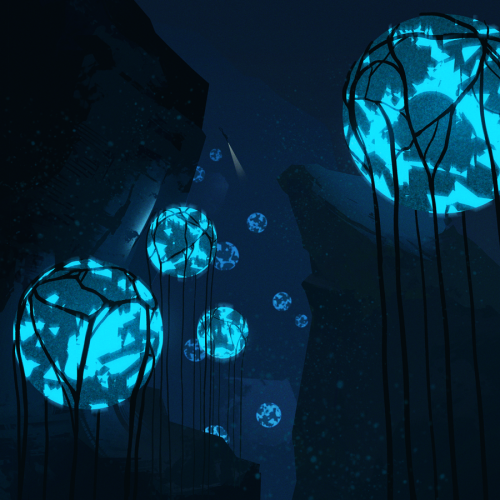Horizon32 - Untitled

More Posts from Horizon32 and Others
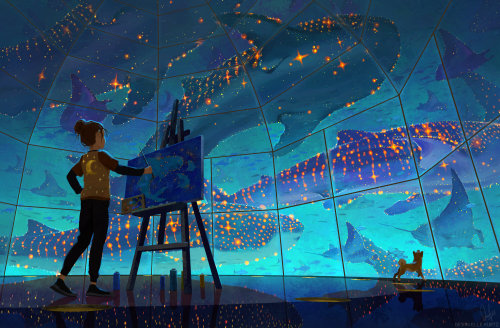


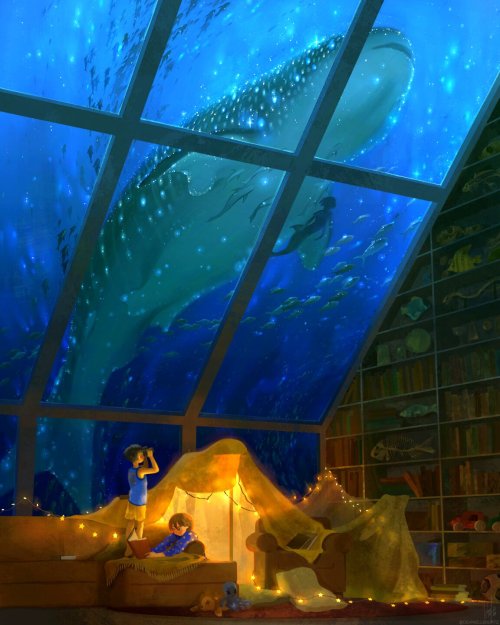
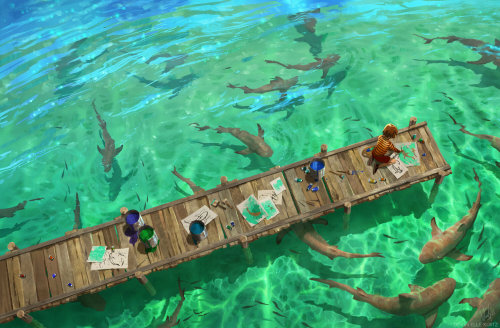
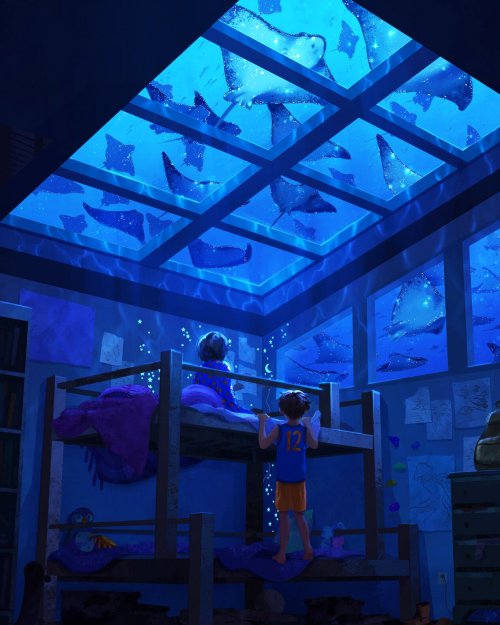
A compilation of my magical ocean-themed illustrations - all of these and more are available as prints until Nov 26th in my store here!

Lava Castle

No cost too great.
No mind to think. No will to break. No voice to cry suffering.

New Low-Cost Battery-Like Device Captures CO2 Emissions While It Charges
Researchers have developed a low-cost device that can selectively capture carbon dioxide gas while it charges. Then, when it discharges, the CO2 can be released in a controlled way and collected to be reused or disposed of responsibly.
The supercapacitor device, which is similar to a rechargeable battery, is about the size of a quarter, and is made in part from sustainable materials including coconut shells and seawater.
Designed by scientists from the University of Cambridge, the supercapacitor could help power carbon capture and storage technologies at a much cheaper cost. Every year, around 35 billion tonnes of CO2 are released into the atmosphere, and solutions are urgently needed to eliminate these emissions and address the climate crisis. The most advanced current carbon capture technologies are quite expensive and require large amounts of energy.
The supercapacitor consists of two electrodes of positive and negative charge. In work led by Trevor Binford while completing his Master’s degree at Cambridge, the team tried alternating from a negative to a positive voltage to extend the charging time from previous experiments. This improved the supercapacitor’s ability to capture carbon.
Read more.

*dramatic announcer voice*
“When space poachers release Earth animals on an alien world, threatening a fragile new alliance, they anger the wrong people. A veterinarian, an accountant, and a furious sign-language-fluent gorilla are coming for them.”

Robin enjoys being one of the only humans around: an exotic outsider, strange and tall, with no shell and only two arms. Consulting for locals who want to keep Earth pets is a fine job. But when a swarm of rabbits invade town and humanity is blamed, everything unravels.
If Robin wants to save the alliance between two planets — and keep from getting sent home in disgrace — she has to prove that a powerful crime ring is behind the crisis. Luckily for her, she makes friends who are eager to help: from planetside, from the nearby space station, and recently escaped from the poacher’s ship.
Those poachers may be bug aliens with an excellent range of vision, but they won’t see this coming.
~~~
Img ID: the cover of the sci-fi novel “A Swift Kick to the Thorax.” It features a veterinarian’s prescription pad floating in space, with the title written in the prescription area. A pen floats behind it and a chunk has been bitten out of the pad.
~~~
Available everywhere! With many short stories to go with it, here on the good ol’ hellsite. And there’s plenty more where those came from!

Floating

What is a semiconductor? An electrical engineer explains how these critical electronic components are made
Semiconductors are a critical part of almost every modern electronic device, and the vast majority of semiconductors are made in Tawain. Increasing concerns over the reliance on Taiwain for semiconductors—especially given the tenuous relationship between Taiwan and China—led the U.S. Congress to pass the CHIPS and Science act in late July 2022. The act provides more than US$50 billion in subsidies to boost U.S. semiconductor production and has been widely covered in the news. Trevor Thornton, an electrical engineer who studies semiconductors, explains what these devices are and how they are made.
1. What is a semiconductor?
Generally speaking, the term semiconductor refers to a material—like silicon—that can conduct electricity much better than an insulator such as glass, but not as well as metals like copper or aluminum. But when people are talking about semiconductors today, they are usually referring to semiconductor chips.
Read more.
-
 mechanical-demon reblogged this · 4 weeks ago
mechanical-demon reblogged this · 4 weeks ago -
 elindae-writes liked this · 1 month ago
elindae-writes liked this · 1 month ago -
 icentea reblogged this · 1 month ago
icentea reblogged this · 1 month ago -
 undeadnecromancer reblogged this · 1 month ago
undeadnecromancer reblogged this · 1 month ago -
 mechanical-demon reblogged this · 2 months ago
mechanical-demon reblogged this · 2 months ago -
 blastertnt liked this · 2 months ago
blastertnt liked this · 2 months ago -
 currydragonbear liked this · 2 months ago
currydragonbear liked this · 2 months ago -
 huethemudluff reblogged this · 2 months ago
huethemudluff reblogged this · 2 months ago -
 mrsjadecurtiss liked this · 2 months ago
mrsjadecurtiss liked this · 2 months ago -
 doppelnatur reblogged this · 2 months ago
doppelnatur reblogged this · 2 months ago -
 doppelnatur liked this · 2 months ago
doppelnatur liked this · 2 months ago -
 liketwoswansinbalance liked this · 2 months ago
liketwoswansinbalance liked this · 2 months ago -
 mechanical-demon reblogged this · 3 months ago
mechanical-demon reblogged this · 3 months ago -
 murrcurial reblogged this · 3 months ago
murrcurial reblogged this · 3 months ago -
 oculairus liked this · 3 months ago
oculairus liked this · 3 months ago -
 the-rat-empress reblogged this · 4 months ago
the-rat-empress reblogged this · 4 months ago -
 basedonmylikes reblogged this · 4 months ago
basedonmylikes reblogged this · 4 months ago -
 rahayn reblogged this · 4 months ago
rahayn reblogged this · 4 months ago -
 bitch-motel liked this · 4 months ago
bitch-motel liked this · 4 months ago -
 basedonmylikes reblogged this · 4 months ago
basedonmylikes reblogged this · 4 months ago -
 dandeliongums reblogged this · 4 months ago
dandeliongums reblogged this · 4 months ago -
 alienclaws reblogged this · 4 months ago
alienclaws reblogged this · 4 months ago -
 sumeria reblogged this · 5 months ago
sumeria reblogged this · 5 months ago -
 shrugemoji reblogged this · 5 months ago
shrugemoji reblogged this · 5 months ago -
 phonographzerohash reblogged this · 5 months ago
phonographzerohash reblogged this · 5 months ago -
 knife-em0ji reblogged this · 5 months ago
knife-em0ji reblogged this · 5 months ago -
 rahayn reblogged this · 5 months ago
rahayn reblogged this · 5 months ago -
 burnegoburn liked this · 5 months ago
burnegoburn liked this · 5 months ago -
 bbyglock liked this · 5 months ago
bbyglock liked this · 5 months ago -
 basedonmylikes reblogged this · 5 months ago
basedonmylikes reblogged this · 5 months ago -
 obelamus liked this · 5 months ago
obelamus liked this · 5 months ago -
 mechanical-demon reblogged this · 6 months ago
mechanical-demon reblogged this · 6 months ago -
 roxas-von-einzbern reblogged this · 6 months ago
roxas-von-einzbern reblogged this · 6 months ago -
 annamhh3u liked this · 6 months ago
annamhh3u liked this · 6 months ago -
 etceterodactyl reblogged this · 6 months ago
etceterodactyl reblogged this · 6 months ago -
 fledermausj liked this · 7 months ago
fledermausj liked this · 7 months ago -
 defjux liked this · 7 months ago
defjux liked this · 7 months ago -
 basedonmylikes reblogged this · 7 months ago
basedonmylikes reblogged this · 7 months ago -
 ypnacmit reblogged this · 7 months ago
ypnacmit reblogged this · 7 months ago -
 ourcoralstar reblogged this · 7 months ago
ourcoralstar reblogged this · 7 months ago -
 candyskiez reblogged this · 7 months ago
candyskiez reblogged this · 7 months ago -
 basedonmylikes reblogged this · 7 months ago
basedonmylikes reblogged this · 7 months ago -
 crimsonweft reblogged this · 8 months ago
crimsonweft reblogged this · 8 months ago -
 dysaniadisorder liked this · 8 months ago
dysaniadisorder liked this · 8 months ago -
 mistsaint reblogged this · 8 months ago
mistsaint reblogged this · 8 months ago -
 basedonmylikes reblogged this · 8 months ago
basedonmylikes reblogged this · 8 months ago -
 ewpukeatronic liked this · 9 months ago
ewpukeatronic liked this · 9 months ago -
 basedonmylikes reblogged this · 9 months ago
basedonmylikes reblogged this · 9 months ago -
 catonacoldassroof reblogged this · 9 months ago
catonacoldassroof reblogged this · 9 months ago -
 3-kraehen-im-anzug liked this · 9 months ago
3-kraehen-im-anzug liked this · 9 months ago
